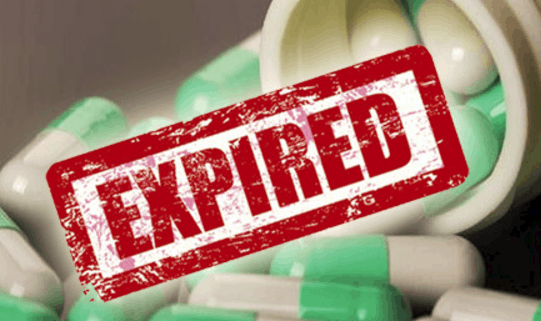EXPIRED!?
Dr. Still often has to prescribe medication for our Smile Sarasota patients for pain and infections, as well as antibiotic pre-medication for those who have artificial heart valves or artificial joints.. It’s important to know about the effectiveness of these drugs if they are close to expiration or have expired. To do that, our patients need to know what ‘expired’ really means.
Drug manufacturers are required to stamp an expiration date on their products. On over-the-counter (OTC) medicines, the expiration date is often printed on the label or carton under “EXP” or stamped without ink into the bottom of a bottle, carton, or the crimp of a tube. But what does the expiration date mean? Is a medicine still safe to take after its expiration date? Will it cause harm or just not work after its expiration date? Neither fully explains what the expiration date means. Actually, it’s the date up until which the drug manufacturer can guarantee that the medicine is fully potent and safe to take based on scientifically-sound product testing. It is usually expressed by month and year. The product can legally be used or dispensed until the last day of the stated month and year.
How the product is stored is important. As you might expect, temperature, humidity, proper sealing can all affect the stability of products. Expiration date testing by manufacturers is done under prescribed conditions. Expiration dates are typically conservative to make sure you get what you paid for—a fully potent and safe medicine.
For prescription medicines there is another date to be aware of, called the “beyond use date.” This is the date that pharmacists are required to place on prescription container labels when dispensing medications. This is different from the expiration date the manufacturer must use. Beyond-use dates are shorter because the manufacturer’s original container has been opened in the repackaging process and it’s often packaged in other than the original container, exposing the medicine to ambient atmospheric conditions. The beyond use date is not later than the expiration date on the manufacturer’s container or one year from the date the drug is dispensed, whichever is earlier.
The effectiveness of a medicine may decrease over time, but studies have shown for most medications that much of the original potency still remains years after the expiration date. Excluding certain prescription medicines such as nitroglycerin, insulin, and liquid antibiotics, most medicines stored under reasonable conditions retain at least 70% to 80% of their original potency for at least 1 to 2 years after the expiration date, even after the container has been opened. So, if you have a headache one night, and you reach for your bottle of ibuprofen and find that it expired last year, chances are high that the medicine still has retained most of its potency.
It is still advisable though to replace medicines that have expired or reached their beyond use date to be sure you are using the most up-to-date product, with proper potency, and with the most up-to-date instructions for use. Since you last purchased the product, new dosing instructions or warnings may have been advised by FDA, the strength may have changed to reduce the risk of errors, a new dosing device may be available to help measure doses more accurately, the product may be packaged in a new container more child-resistant than an older version of the drug, and so on.
So, clean out your medicine supplies regularly, and replace any medicines that are more than a year or two beyond its expiration date. But…before you toss them, read our Blog about HOW to dispose of medications!
Sources and Credits: FDA.gov, drugs.com




